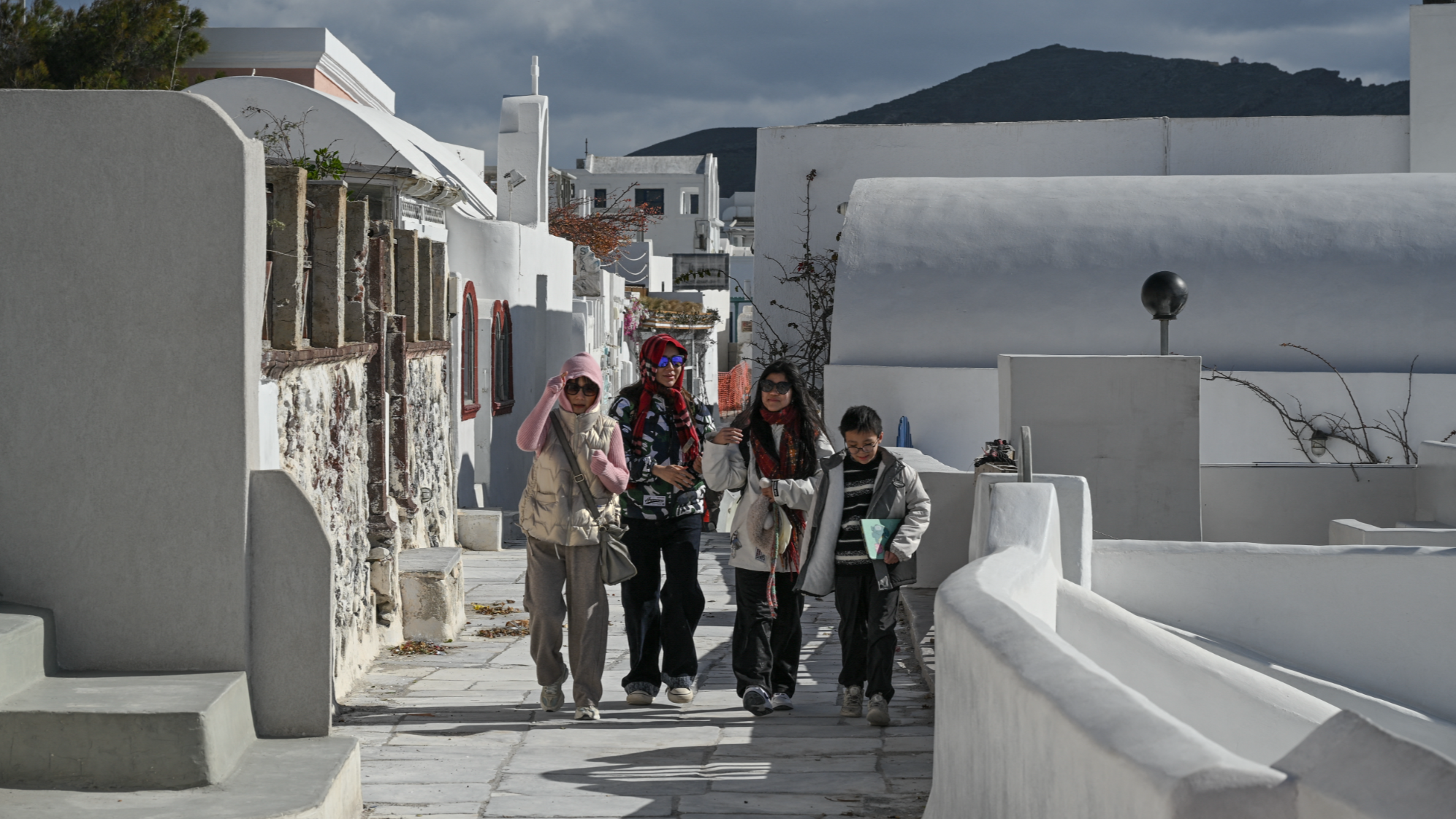
ATHENS - Hundreds more people were expected to leave Greece's Santorini island on Wednesday as tremors shook the popular summer tourist destination for a sixth day.
About 6,000 people have left on ferries and planes in recent days as hundreds of small quakes were registered in the surrounding sea, shaking buildings, kicking up dust on the island's rocky cliffs, and raising fears of a major earthquake.
The island's population swells in summer when millions of tourists visit the traditional white-painted villas that line its steep hillsides. The 2021 census puts Santorini's permanent population at 15,000, so it is likely that several thousand remain on the island, given that it is off-season.
READ MORE: Schools shut, more flights scheduled as quakes constantly shake Santorini
Authorities have introduced safety measures, including halting construction, shutting schools on Santorini and the nearby islands of Ios, Amorgos and Anafi, and ordering residents and hotels to empty their pools to reduce the burden on the ground.
Three ferry routes from the port of Piraeus to Santorini and vice versa were cancelled on Wednesday due to rough seas. Bad weather was not expected to disrupt six Aegean Airlines flights, including two emergency ones, scheduled for Wednesday.
Seismologists estimate that the high seismic activity could take days or weeks to abate, although locals and government officials said the shaking had subsided on Wednesday.
"It has not shaken much today, I haven't felt anything since 0400 (0200GMT)," said Nikos Sakorafos, owner of a travel agency in the popular tourist village of Fira.
"Now, it's a dead season for the island, most people don't have work so it's easier for them to leave."
READ MORE: Greece to tax cruise ship arrivals to protect popular islands from overtourism
The government is due to hold a briefing over the situation later on Wednesday.
Greece is one of the most earthquake-prone countries in Europe as it sits at the boundary of the African and Eurasian tectonic plates whose constant interaction prompts frequent quakes.
Santorini took its current shape following one of the largest volcanic eruptions in history, around 1600 BC. The last eruption in the area occurred in 1950.


